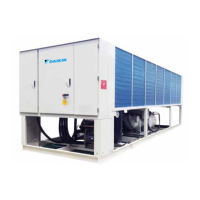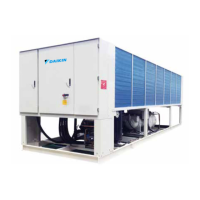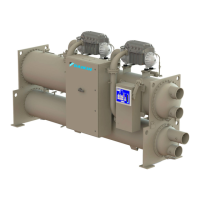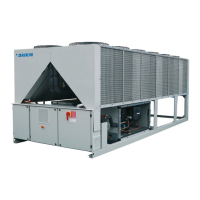Page | 5
2. DEFINITION
Active Setpoint
The active setpoint is the parameter setting in effect at any given moment. This variation can occur on
setpoints that can be altered during normal operation. Resetting the chilled water leaving temperature
setpoint by one of several methods such as return water temperature is an example.
Active Capacity Limit
The active capacity setpoint is the setting in effect at any given moment. Any one of several external
inputs can limit a compressor’s capacity below its maximum value.
Dead Band
The dead band is a set of values associated with a setpoint such that a change in the variable occurring
within the dead band causes no action from the controller. For example, if a temperature setpoint is
44F and it has a dead band of 0.2 degrees F, nothing will happen until the measured temperature is less
than 43.8F or more than 44.2F.
LWT
Chilled / Evaporator leaving water temperature.
EWT
Chilled / Evaporator entering water temperature.
Discharge Superheat
Discharge superheat is calculated using the following equation:
Discharge Superheat = Discharge Temperature – Condenser Saturated Temperature
Suction Superheat (SSH)
SSH is calculated for each circuit using the following equation:
SSH = Suction Temperature – Evaporator Saturated Temperature
Evaporator Approach
The evaporator approach is calculated for each circuit. The equation is as follows:
Evaporator Approach = LWT – Evaporator Saturated Temperature.
EXV
Electronic expansion valve, used to control the flow of refrigerant to the evaporator, controlled by the
circuit microprocessor.
Unload Evaporator Low Pressure Setpoint
The kPa suction pressure setting at which the controller will unload the compressor to maintain the
minimum setting.
HMI
Operator Interface Touch Screen, one screen per unit provides operating data visually and
accommodates setpoint entry.

